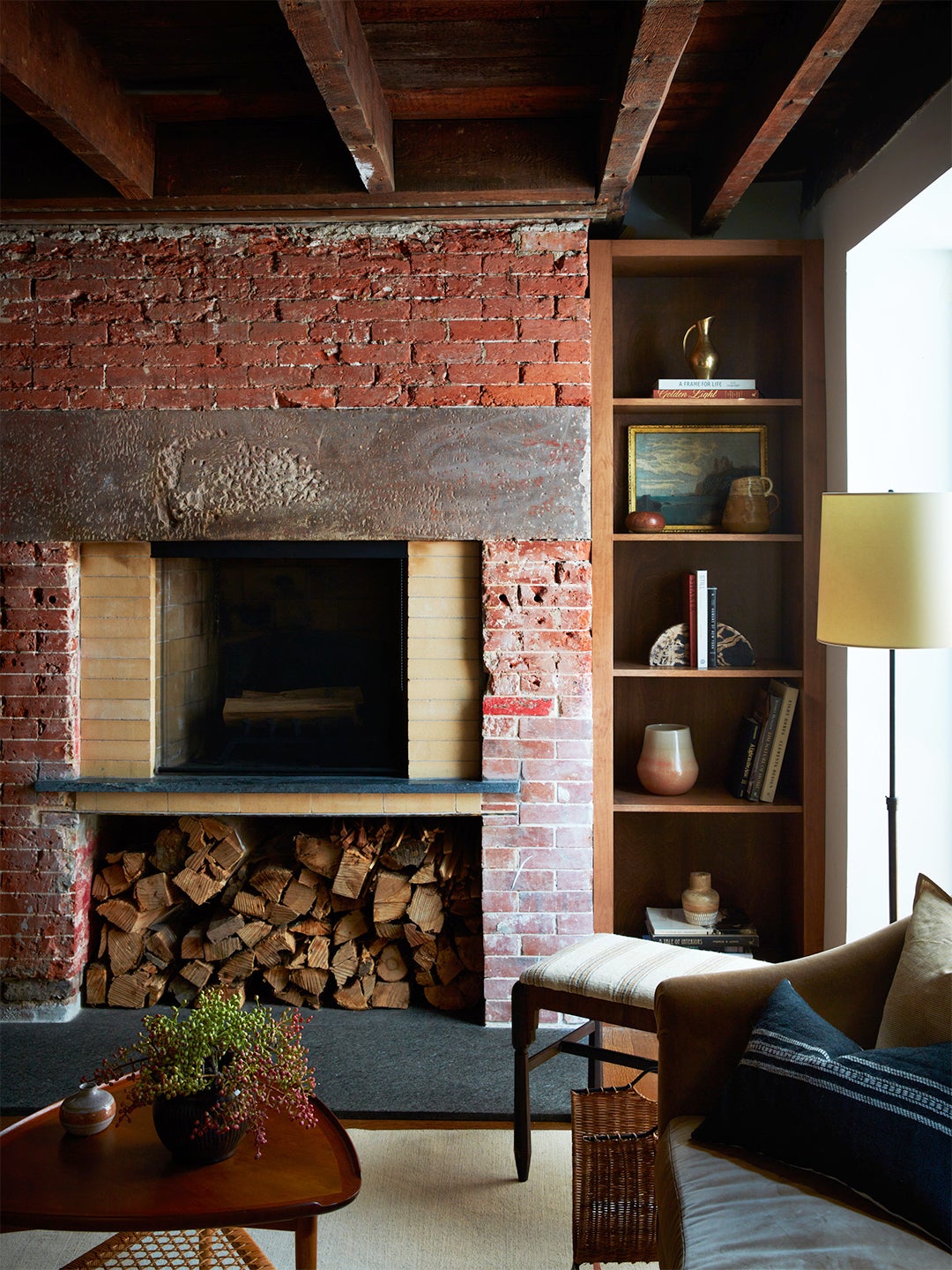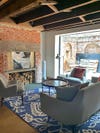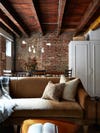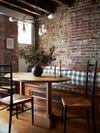The Number-One Rule of Decorating a Space With Exposed Brick
Painting over this room’s red-brown walls wasn’t an option.
Published Jan 6, 2023 1:15 AM
We may earn revenue from the products available on this page and participate in affiliate programs.
Exposed brick and natural light are two highly coveted home features for city dwellers. But what if you have too much of the first thing and not enough of the second? For one family of five in Manhattan’s West Village neighborhood, that was exactly the case. Their kitchen, dining nook, and living room are located below street level, meaning sunshine is a rare thing to come by. To make matters even dimmer, the area is covered in exposed brick.
“It’s a lot of brown,” admits designer Maureen Ursino, noting that even up above, the wood ceiling beams and planks from the turn of the century are still intact. Ursino was tasked with turning the 200-square-foot space into a cozy-but-not-cabin-y hangout—without touching the historical features that the clients were adamant about keeping. “So we leaned into pulling colors found in the bricks to further accentuate it,” explains Ursino. Ahead, she shares a few dos and don’ts of decorating around a lot of red.
Don’t: Try to Make One Thing Pop
Investing in a cream-colored sofa might seem like an easy way to brighten things up, but it’s a lot for the eye to handle. “We purposefully didn’t want anything that felt too contrasting,” shares Ursino. Colors like butter yellow (peep the sectional), beige, apricot, and burgundy are cheery without being jarring. The only doses of white that appear against the brick walls are the sliver of kitchen cabinets in the adjacent space and the bulbs on the Apparatus pendant lamp that hangs over the dining table. “If you’re going to use brighter colors in a space like this, it just has to be done in small, thoughtful amounts,” she adds.
Do: Lounge Around on Velvet
The place to spice things up? Textures. The rich gold-yellow hue of the Zak & Fox fabric on the sectional might play nice with the red brick, but the smooth velvet provides a completely opposite finish. The same goes for the linen armchair in the corner—unlike rough clay, you want to cuddle up to these materials.
Don’t: Bleach Your Woods
While it might seem counterintuitive to introduce more shades in the brown-red family, Ursino notes that introducing white oak furniture will only pull away from the character of the brick. The wood in her arsenal? Teak (the coffee table), stained oak (the dining table), and walnut (the bookshelves).
Do: Choose Traditional Patterns in Cool Tones
A few blue and green touches—the Libeco throw blanket, the Zara Home pillows, and the dining bench cushion in Abraham Moon fabric—are the sole exceptions to all the warm hues. For the latter, Ursino wanted something that would fit the overall modern-rustic vibe as well as pair nicely with the charcoal-painted ladder-back chairs. A blurred-out navy plaid was a no-brainer. “I was continually leaning into the cozy nest, and that’s something this pattern does very quickly,” she says. Things might be darker down here, but they’re definitely not dull.






